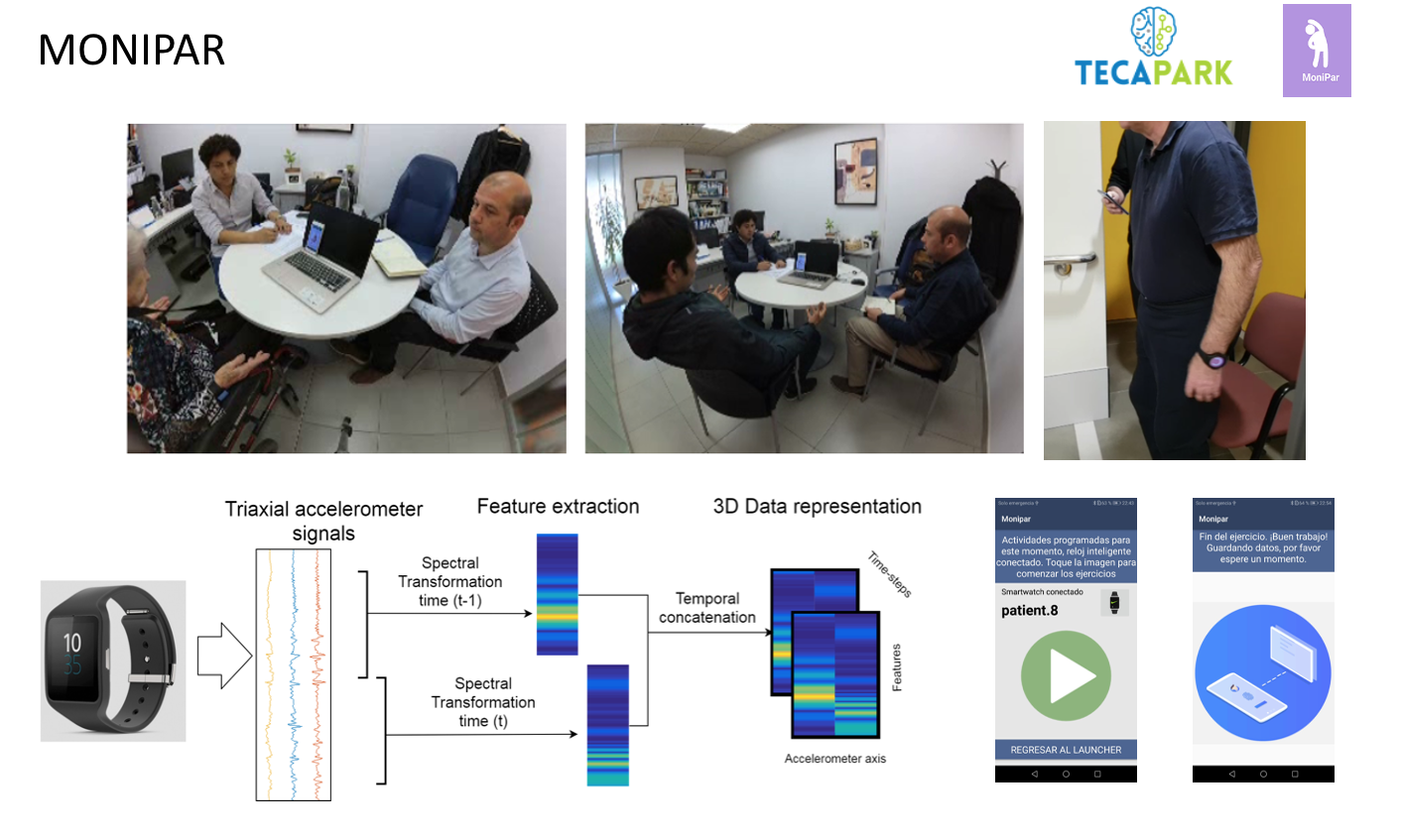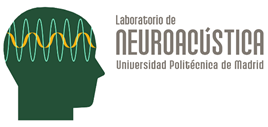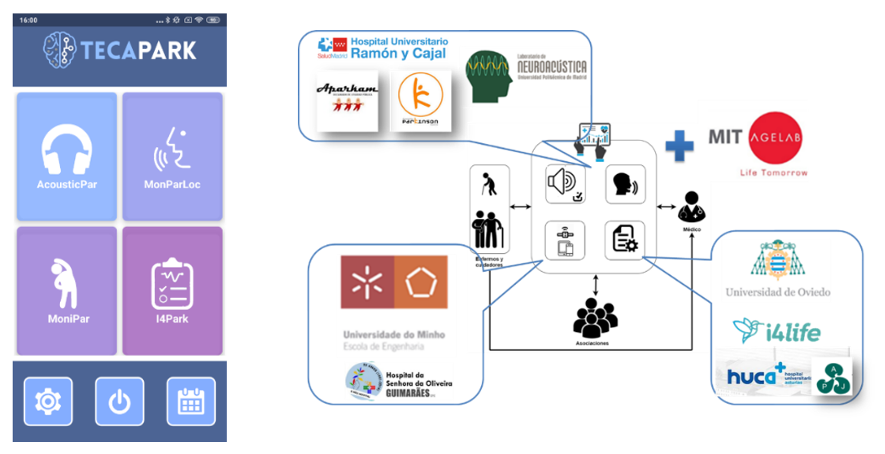FUNDAMENTALS
 The research line for the monitoring of motor symptoms in Parkinson’s disease starts as part of the TECAPARK project, which aims to improve the quality of life of people affected by Parkinson’s disease through the use of affordable technologies that facilitate the monitoring and rehabilitation of patients. The team have worked in the development of tools for the automatic monitoring of motor status in Parkinson’s disease through non-invasive and low-cost technologies. For this purpose, an application for smartphones and smartwatches named Monipar has been developed to assess the motor competence of patients through a set of exercises. From these exercises, various biomarkers are extracted to analyze symptoms such as slowness of movement (bradykinesia) and tremors. These markers can be used for objective monitoring of symptoms, with devices that allow the assessment of the disease in an automated and unobtrusive manner.
The research line for the monitoring of motor symptoms in Parkinson’s disease starts as part of the TECAPARK project, which aims to improve the quality of life of people affected by Parkinson’s disease through the use of affordable technologies that facilitate the monitoring and rehabilitation of patients. The team have worked in the development of tools for the automatic monitoring of motor status in Parkinson’s disease through non-invasive and low-cost technologies. For this purpose, an application for smartphones and smartwatches named Monipar has been developed to assess the motor competence of patients through a set of exercises. From these exercises, various biomarkers are extracted to analyze symptoms such as slowness of movement (bradykinesia) and tremors. These markers can be used for objective monitoring of symptoms, with devices that allow the assessment of the disease in an automated and unobtrusive manner.
OUR WORK

Continuous monitoring of motor symptoms in Parkinson’s disease can be performed through information and communication technologies. For symptom monitoring, the use of the Monipar application in conjunction with smartwatches for data collection has been proposed, as an ergonomic, automated, and user-friendly solution.
The tool Monipar is composed of two modules, one intended to work on the phone, which works as a user interface, and the second module works on a smartwatch intended for the collection of movement data. With this tool, an experimentation stage has been carried out in the cross-border area between Portugal and Spain, where a set of movement data has been collected and used to implement different algorithms for the detection of specific symptoms.
Among the implemented algorithms are found an automatic tremor analyzer based on deep neural networks, which allows obtaining results similar to those that would be obtained by performing a clinical evaluation. A freezing of gait detector has also been implemented, which uses algorithms based on sequential deep networks, whose results in the detection of the symptom can surpass the state-of-the-art in the detection of this symptom. An algorithm for early detection of Parkinson’s disease based on the analysis of bradykinesia has also been implemented, which allows discriminating between healthy and sick subjects with high accuracy.
The development of these technologies may allow the implementation of an objective and continuous analysis of motor symptoms over time, with several applications such as the improvement of treatments and remote management of the disease.

